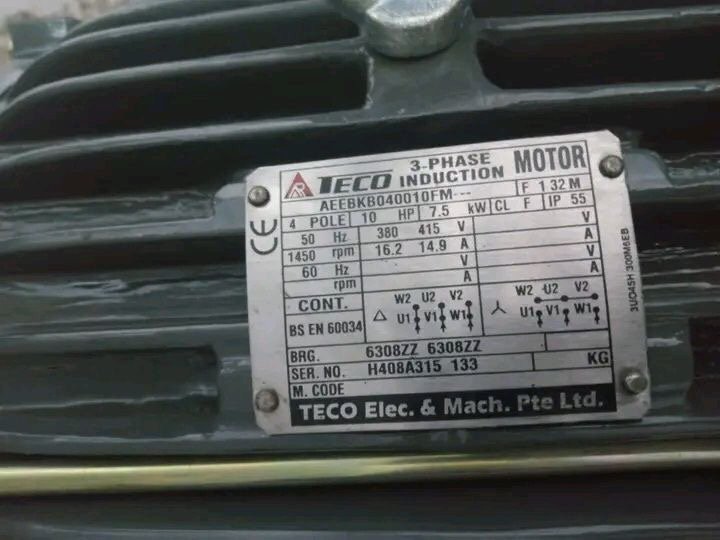Electric motors are rated in kW (or HP) rather than kVA for several reasons:
kVA = V × I
P = kVA x Power Factor
P =√3 V I Cosφ

- Fixed Power Factor: Electric motors have a predetermined power factor that’s typically included in their nameplate data. Unlike other loads where the power factor can vary, motors have a consistent power factor due to their design. This fixed power factor is usually close to unity (1), and it represents the ratio of real power (kW) to apparent power (kVA), indicating that most of the power consumed is converted into useful mechanical work.
- Conversion of Energy: Electric motors are designed to convert electrical energy into mechanical work. The output they provide is mechanical in nature, which means the focus is on the active power (kW) used to perform this conversion. Reactive power (kVAR), which doesn’t contribute to mechanical output, is mainly utilized for magnetic field generation within the motor.
- Load Type: Unlike many other electrical devices, the load on an electric motor is mechanical rather than electrical. This means the emphasis is on the actual work done (mechanical output) and not on accounting for the reactive power required for magnetizing the motor. The kVA measure is more relevant for loads that produce both real and reactive power, which may be the case in some industrial processes or equipment.
- Consistency Across Loads: Electric motors maintain a consistent power factor regardless of the mechanical load they are driving. This is due to their inherent design and operating characteristics. Because the power factor remains relatively stable, focusing on real power (kW) alone provides a clear indication of the energy being converted into useful work.

In summary, electric motors are rated in kW (or HP) rather than kVA because they have a fixed power factor, convert electrical energy into mechanical work, and their operation mainly revolves around active power. The consistent power factor of motors simplifies the process of rating and sizing them, as their design inherently accounts for the reactive power needed for proper function.